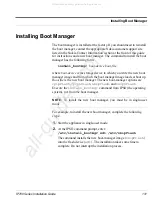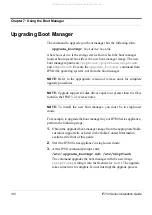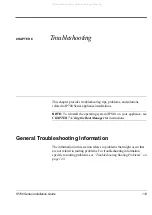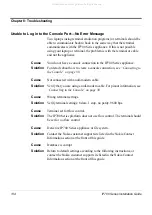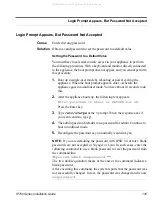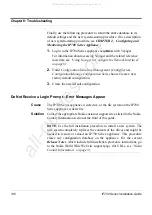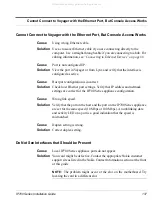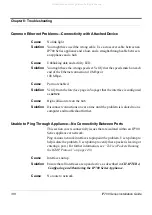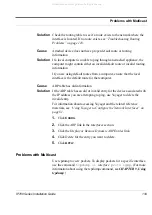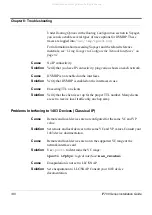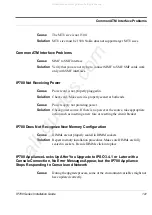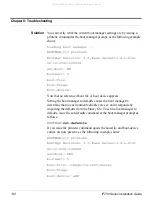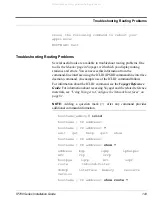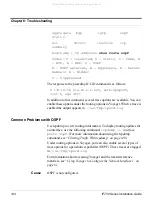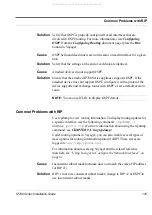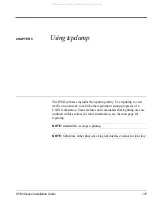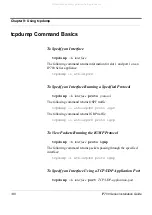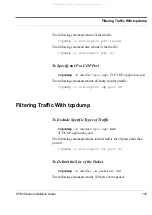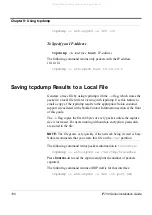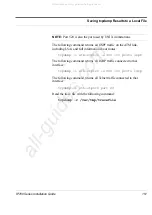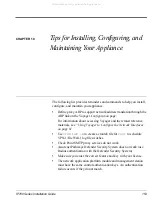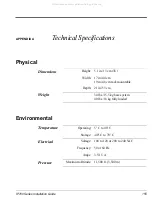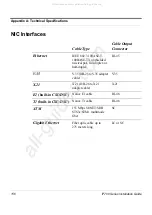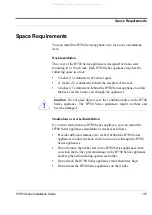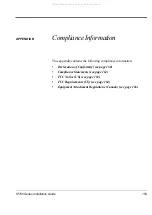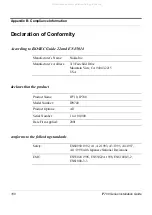
IP700 Series Installation Guide
145
Common Problems with RIP
Solution
Verify that OSPF is properly configured for all interfaces that are
involved in OSPF routing. For more information, view
Configuring
OSPF
from the
Configuring Routing
document page (press the
D
OC
button) in Voyager.
Cause
OSPF hello and dead timers are not the same on each interface for a given
link.
Solution
Verify that the settings at the end of each link are identical.
Cause
Attached devices do not support OSPF.
Solution
Ensure that the attached IP700 Series appliance supports OSPF. If the
attached device does not support OSPF, configure it with a protocol the
device supports and exchange routes with OSPF or set a default or static
route.
NOTE:
You can use ICLID to display OSPF details.
Common Problems with RIP
Use tcpdump to view routing information. To display routing updates for
a specific interface, use the following command:
tcpdump -i
interface
proto rip
. (For more information about using the tcpdump
command, see
CHAPTER 9, Using tcpdump
.)
Under routing options in Voyager, you can also enable several types of
trace options for routing information protocol (RIP). These traces are
logged in
/var/tmp/ipsrd.log
.
For information about accessing Voyager and the related reference
materials, see
“Using Voyager to Configure the Network Interfaces” on
page 81
.
Cause
Inconsistent subnet mask (netmask does not match the class of IP address
for RIP v1).
Solution
RIP v1 must use consistent subnet masks; change to RIP v2 or OSPF to
use inconsistent subnet masks.
All manuals and user guides at all-guides.com

